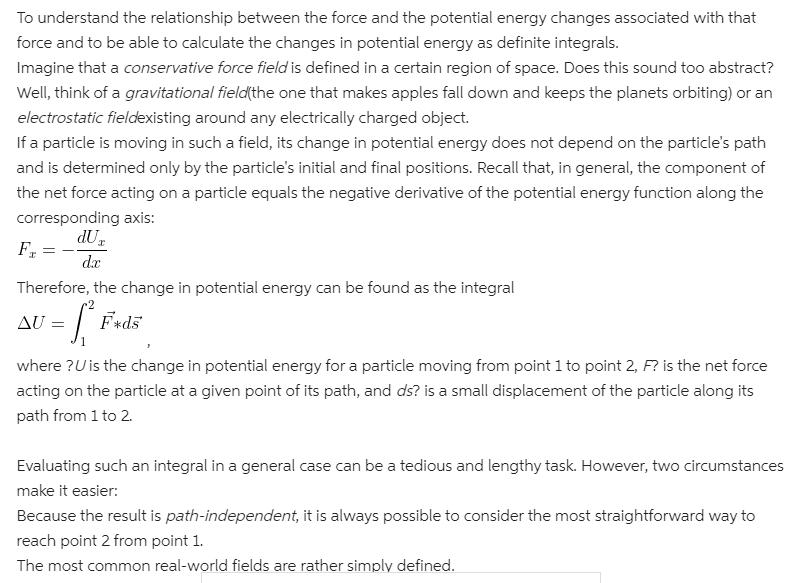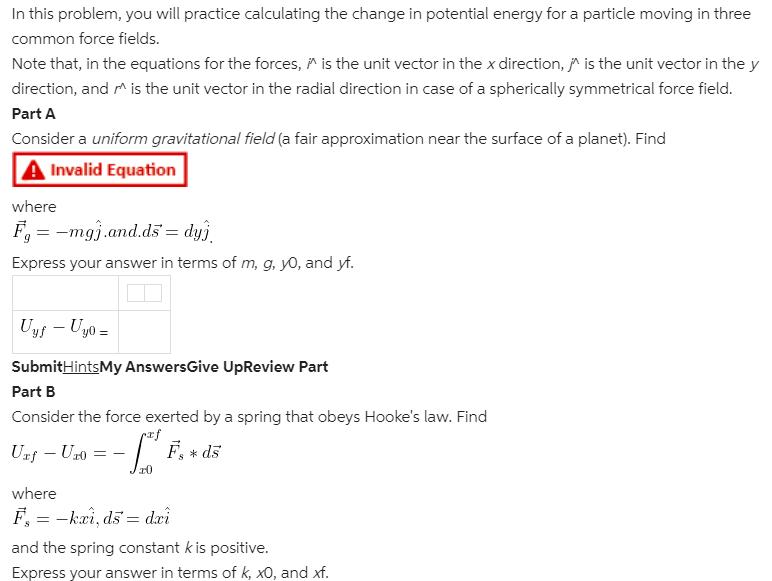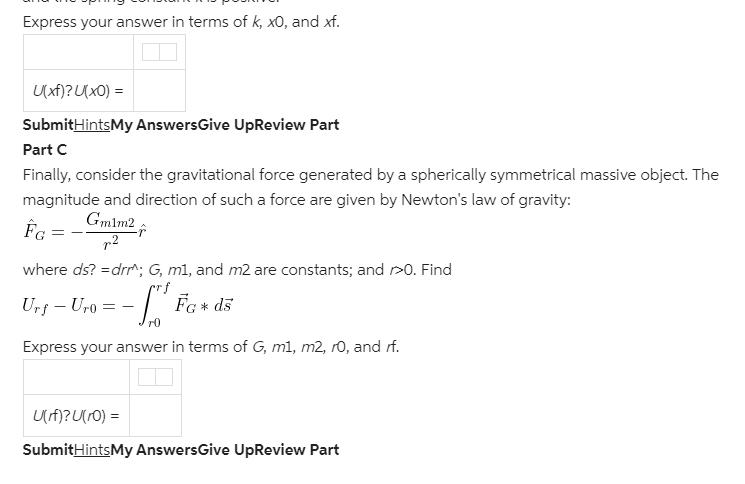Answered step by step
Verified Expert Solution
Question
1 Approved Answer
To understand the relationship between the force and the potential energy changes associated with that force and to be able to calculate the changes



To understand the relationship between the force and the potential energy changes associated with that force and to be able to calculate the changes in potential energy as definite integrals. Imagine that a conservative force field is defined in a certain region of space. Does this sound too abstract? Well, think of a gravitational field(the one that makes apples fall down and keeps the planets orbiting) or an electrostatic fieldexisting around any electrically charged object. If a particle is moving in such a field, its change in potential energy does not depend on the particle's path and is determined only by the particle's initial and final positions. Recall that, in general, the component of the net force acting on a particle equals the negative derivative of the potential energy function along the corresponding axis: dU, dx Therefore, the change in potential energy can be found as the integral Fuds AU where ?U is the change in potential energy for a particle moving from point 1 to point 2, F? is the net force acting on the particle at a given point of its path, and ds? is a small displacement of the particle along its path from 1 to 2. Evaluating such an integral in a general case can be a tedious and lengthy task. However, two circumstances make it easier: Because the result is path-independent, it is always possible to consider the most straightforward way to reach point 2 from point 1. The most common real-world fields are rather simply defined. In this problem, you will practice calculating the change in potential energy fora particle moving in three common force fields. Note that, in the equations for the forces, * is the unit vector in the x direction, * is the unit vector in the y direction, and is the unit vector in the radial direction in case of a spherically symmetrical force field. Part A Consider a uniform gravitational field (a fair approximation near the surface of a planet). Find A Invalid Equation where F, = -mgj.and.ds = dyj. %3D Express your answer in terms of m, g, yo, and yf. Uyf Uyo = SubmitHintsMy AnswersGive UpReview Part Part B Consider the force exerted by a spring that obeys Hooke's law. Find F. Urf - Uz0 ds where F, = -kxi, ds = dxi %3D and the spring constant k is positive. Express your answer in terms of k, x0, and xf. Express your answer in terms of k, x0, and xf. U(xf)?U(x0) = SubmitHintsMy AnswersGive UpReview Part Part C Finally, consider the gravitational force generated by a spherically symmetrical massive object. The magnitude and direction of such a force are given by Newton's law of gravity: FG = Gmlm2 p2 where ds? =dr; G, ml, and m2 are constants; and r>0. Find Ur Uro = - | FG* d5 Express your answer in terms of G, m1, m2, r0, and rf. Ulf)?U(r0) = SubmitHintsMy AnswersGive UpReview Part
Step by Step Solution
★★★★★
3.58 Rating (169 Votes )
There are 3 Steps involved in it
Step: 1

Get Instant Access to Expert-Tailored Solutions
See step-by-step solutions with expert insights and AI powered tools for academic success
Step: 2

Step: 3

Document Format ( 2 attachments)
635d7cd87c957_176087.pdf
180 KBs PDF File
635d7cd87c957_176087.docx
120 KBs Word File
Ace Your Homework with AI
Get the answers you need in no time with our AI-driven, step-by-step assistance
Get Started


